Jodhpur Tour Package
Jodhpur is famous for the distinctive colour of its buildings, a reminder of the Brahmins, who used to paint their houses blue to deter insects and keep the dwellings cool during the summer. Founded in 1459, the old city is encircled by an imposing wall and accessed through eight magnificent gates. Jodhpur is famously called the Sun City, as the sun is visible here first every morning. Jodhpur was founded in the year 1459 by Rao Jodha and the city earned its name after him.
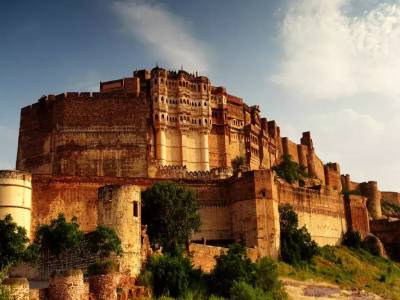
Mehrangarh Fort
The fort encloses a museum now which exhibits various belongings of the royals. The palace was built by Rao Jodha in 1459. Mehrangarh Fort stands a hundred feet in splendor on a perpendicular cliff, four hundred feet above the sky line of Jodhpur.

Jaswant Thada
Jaswant Tada is a royal cenotaph built in white marble. It has a small pond and a pretty garden next to it. This structure is just a few minutes downhill walk from the main fort, so there is no need to take a ride. Also called "Taj Mahal of Marwar".
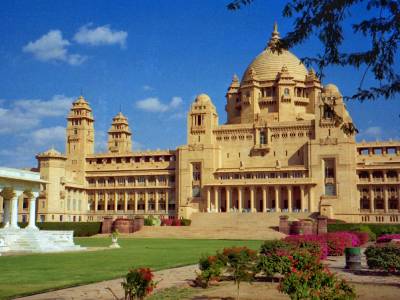
Umaid Bhawan Palace
Palace is also a major tourist attraction in Jodhpur. Apart from being a heritage hotel, it is a museum and the residence of the Royal Family of the present owner, Raja Gaj Singh. Because of its location on the highest point in Jodhpur, the Chittar Hill.
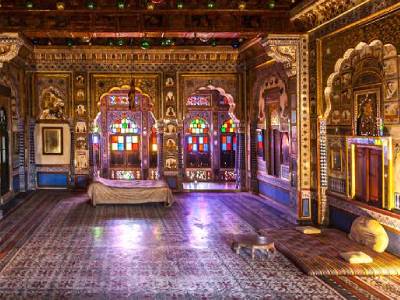
Sheesh Mahal
A characteristic feature of the royal Rajput architecture, the Sheesh Mahal in the Mehrangarh Fort of Jodhpur is a treat to the eye of the beholder. Also known as Glass Palace of Jodhpur, this is marvelous piece of architecture. The mirrors are of convex shape and designed with colorful foil and paint which would glitter bright under candlelight or oil lamps.
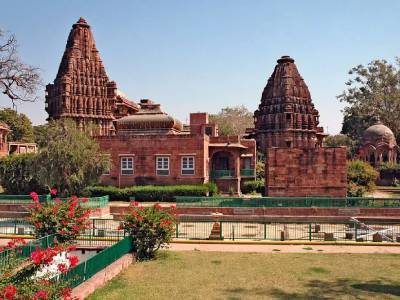
Mandore Garden
Famous royal cenotaphs, Mandore Garden is located just 9 kilometres away from Jodhpur in Mandore which was once the ruling seat of the Pratihara dynasty. The garden is a part of the more massive Mehrangarh Fort, and also houses the famous Hall of Heroes and the temple of Three Hundred Million Gods. The garden also has a Government Museum, which is full of artefacts and old relics.
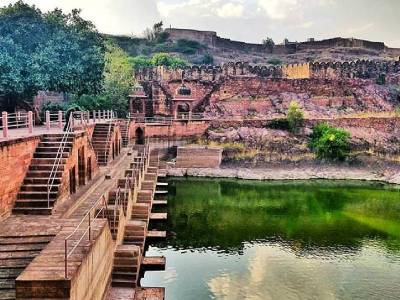
Rani Padamsar Lake
Ranisar Lake was built some 500 years ago in the 15th century. The lake was built on the order of Rao Jodha’s wife, Queen Jasmade Hadi. Rao Joda was the founder of Jodhpur, and his wife the Queen ordered the construction of the lake. The lake was built for water preservation as Jodhpur being a desert city the water preservation was a big issue back in those days.
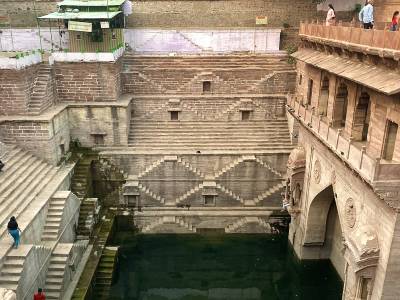
Toorji Ka Jhalra
Constructed in 1740, Toorji Ka Jhalra, commonly called stepwell of Jodhpur, is an intricate design of stepwell, one of the few remaining structures depicting the traditional water management systems of Jodhpur. Its impressive design attracts many tourists, and is regarded as a fun place by locals and visitors to engage in harmless, recreational water games in order to beat the heat.
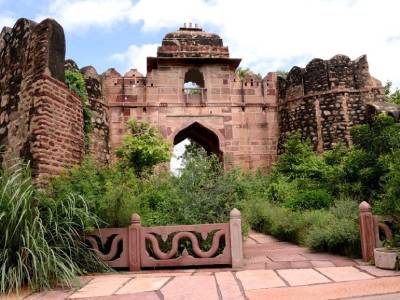
Rao Jodha Desert Park
Rao Jodha Desert Rock Park was created in 2006 out of a large, rocky wasteland beside the Mehrangarh Fort. The park was built to restore the natural ecology of this neglected terrain and has become a prime tourist attraction of the city today. The rocky ravines are densely populated with the indigenous flora of the Thar desert, there are over 200 species of plants at this ecopark.
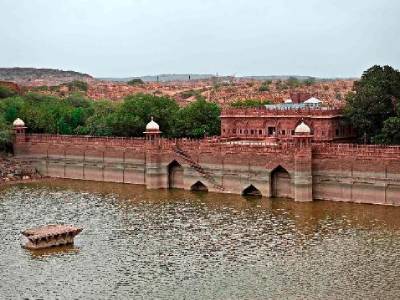
Balsamand Lake
Balsamand Lake is an artificial lake that was built way back in 1159 AD by Balak Rao Parihar as a water reservoir to cater to Mandore. One kilometer long, 50 m broad and 15 m deep; the lake is located amidst a manicured garden full of mango, papaya, pomegranate, guava and plum trees. Jackal and peacock are the prominent guests in the garden. Watch out for pesky monkeys when walking the nature trails.
